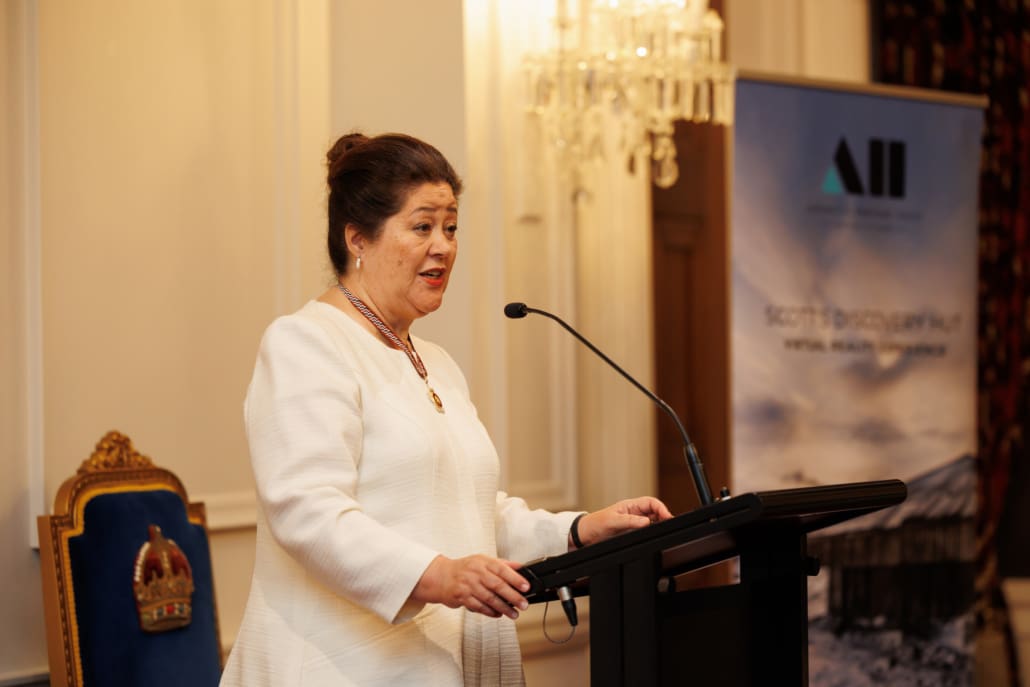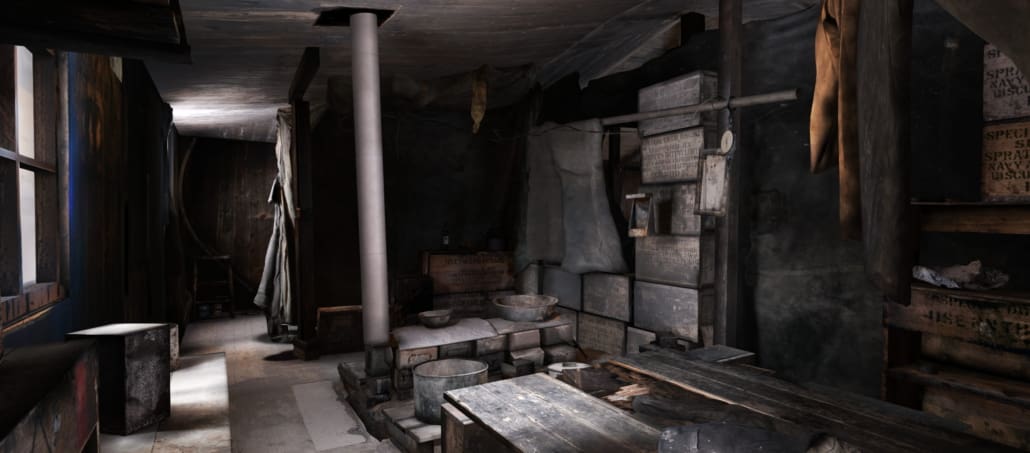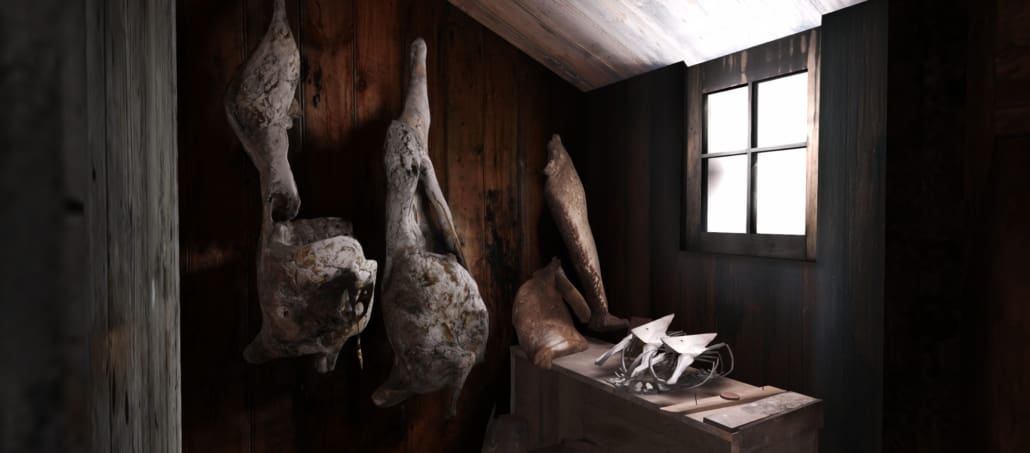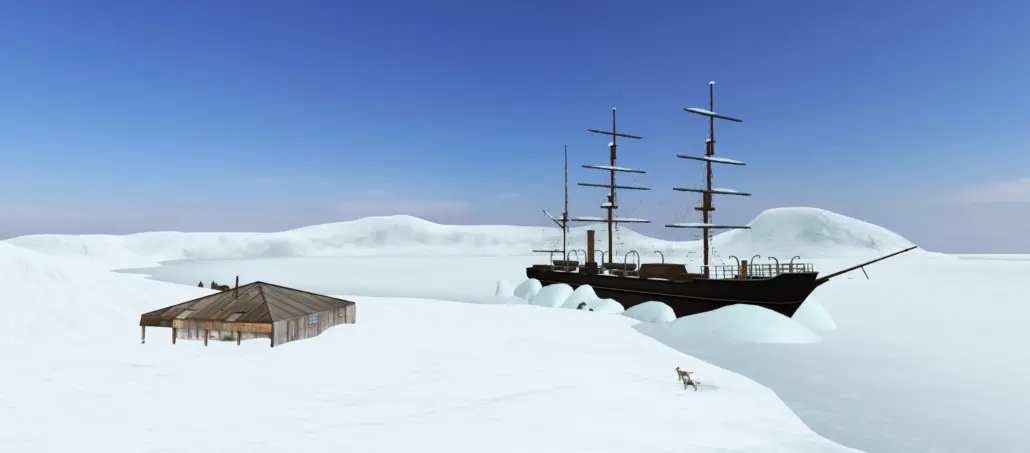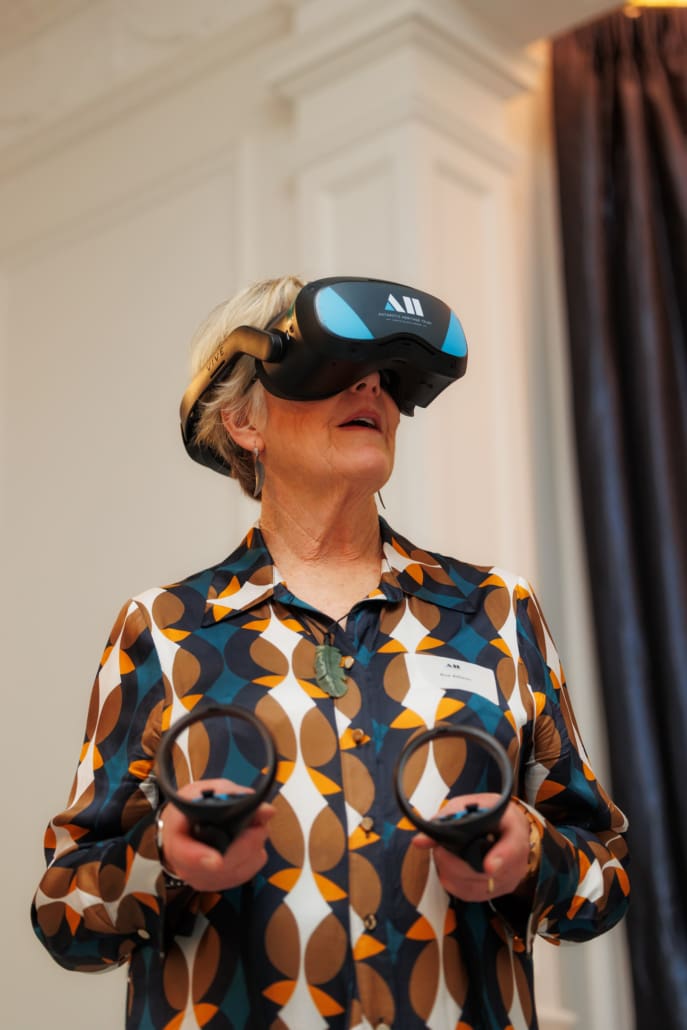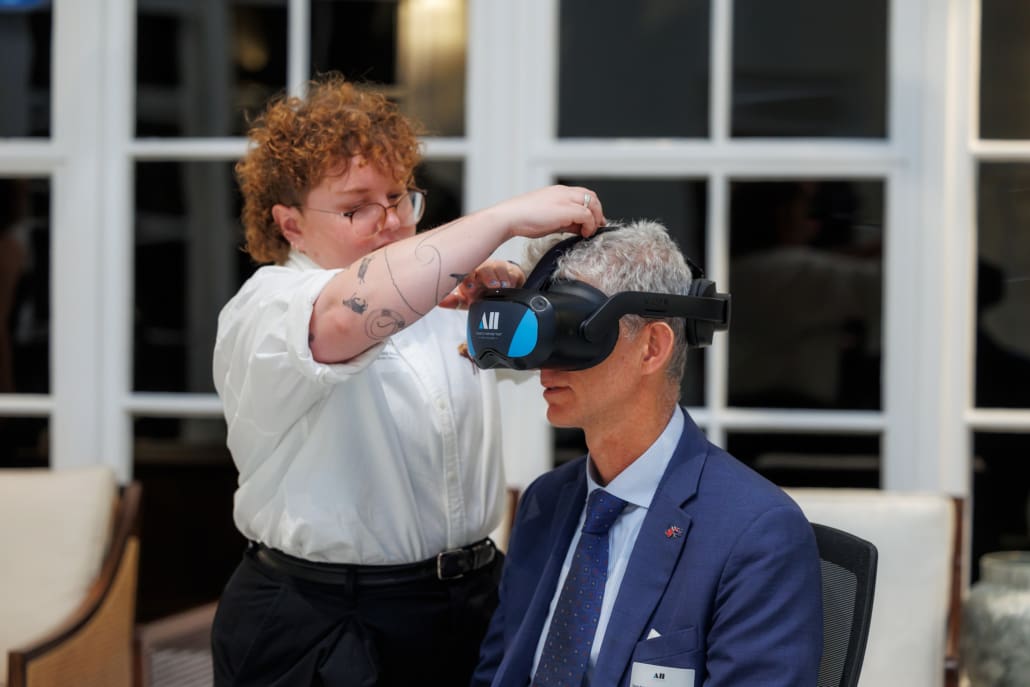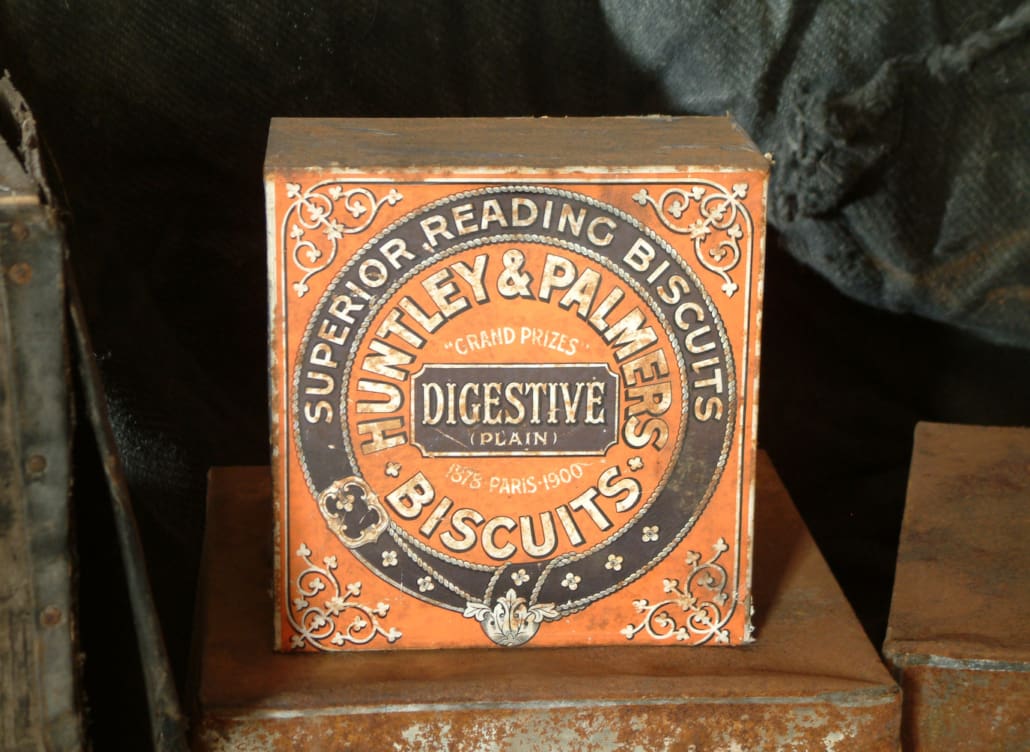Cutting-edge Discovery Hut VR Experience Launched
Captain Scott’s first expedition to Antarctica, the National Antarctic Expedition 1901-1904, was recorded through photographs, drawings and diary entries by Scott and his men, including young New Zealander Clarence Hare. More than 120 years later, these recordings, along with cutting edge technology, have helped bring to life the Trust’s latest virtual reality offer: Scott’s Discovery Hut Virtual Reality Experience.
On 15 August, the Trust’s Patron-in-chief, Her Excellency The Rt Hon Dame Cindy Kiro, GNZM, QSO, Governor-General of New Zealand launched the VR experience at an event at Government House. Invited guests were able to explore the hut, its surroundings and the specially developed interactives that form the experience.
The launch is the culmination of more than a year of work to develop the experience, and is part of the Trust’s goal to share the world’s greatest exploration stories, and to make the sites under our care accessible.
“Most people will never be able to visit these historic sites. Virtual reality brings the hut to them, and gives people an insight into the explorers lives, and how the hut supported some of the earliest science and exploration in Antarctica,” said the Trust’s Executive Director Francesca Eathorne. “We hope this unique experience will connect people with the early explorers and the Trust’s conservation work.”
Within the experience the Trust shares fascinating stories, which range from the domestic to the dramatic, and demonstrate why the spirit of exploration is still so important today.
One of the stories is that of Clarence Hare: a young man from New Zealand who became Scott’s assistant steward. Hare stepped onboard the Discovery at the port of Lyttleton, New Zealand, where the ship had stopped to pick up the prefabricated hut they would erect at Hut Point and extra provisions. His diary entry within the experience records pride in his country (New Zealand farmers provided sheep for the expedition), and the simple pleasures of a Sunday roast far from home. Two mutton carcasses still remain inside the hut, conserved by the Trust.
To create something as realistic and true to the real world, the Trust partnered with leading immersive technology expert, StaplesVR. The experience took 15 people, including interns from Auckland University of Technology (AUT), well over 1,000 hours to develop.
“It was incredibly important to ensure we accurately captured the heritage and significance of the building along with the items inside, that each spot of rust and grain in the timber was processed and implemented into the digital replica,” said Krystal Paraone, StaplesVR Technical Manager.
As well as recreating the hut in detail, using LiDAR and photogrammetry, StaplesVR has replicated the Hut Point environment surrounding Discovery hut, and developed a number of gamified interactives that heighten the experience and feed into the overall story of science, exploration, shelter and conservation. Participants can feed huskies, view penguins, meet an heroic-era explorer about to head off on a sledging expedition, and go up in a hydrogen balloon as Scott once did during his first expedition to Antarctica.
The Trust’s project manager, conservation experts and education team spent time discussing the experience’s key themes, researching and sourcing historic imagery, as well as testing and reviewing the experience to ensure the storytelling captured the spirit of Discovery hut, and interactive objects like the balloon were an accurate representation of the balloon used in Antarctica (one item that was not left behind in the hut).
Scott’s Discovery Hut Virtual Reality Experience, while entertaining and informative, also provides an important historic record and showcases the Trusts’ conservation work.
In 2015, the Trust completed a two year programme of conservation work at Discovery hut, ensuring the hut’s structural integrity, making it weathertight and conserving 500 artefacts which users can learn about in the VR experience. These include Huntley and Palmers biscuits, the last meal (seal meat) left behind on the stove, repaired canvas trousers, dog biscuits and a sledging harness.
“The conservation work our teams undertake is world-leading. Sharing it through VR helps us to educate people around the importance of saving this cultural heritage for future generations,” said Francesca Eathorne.
Discovery Hut was the first expedition base built on Antarctica’s Ross Island. The hut is significant as it provided shelter not only for Scott’s Discovery expedition, but also every subsequent heroic-era expedition to Ross Island.
The Trust hopes thousands of people will explore the hut virtually. It will initially be touring the VR experience to schools, community groups, festivals and public venues throughout New Zealand, and in time, will share it internationally.
The Trust is grateful to the generous supporters who funded this work, including Antarctic Heritage Trust Inspiring Explorers™ Fund donors, a grant from Manatū Taonga Ministry for Culture and Heritage Regeneration Fund, developer StaplesVR and Trust logistics partner Antarctica New Zealand.


